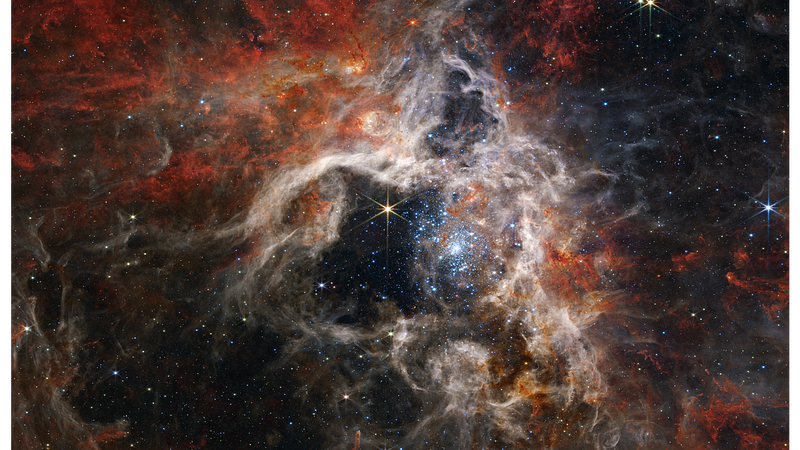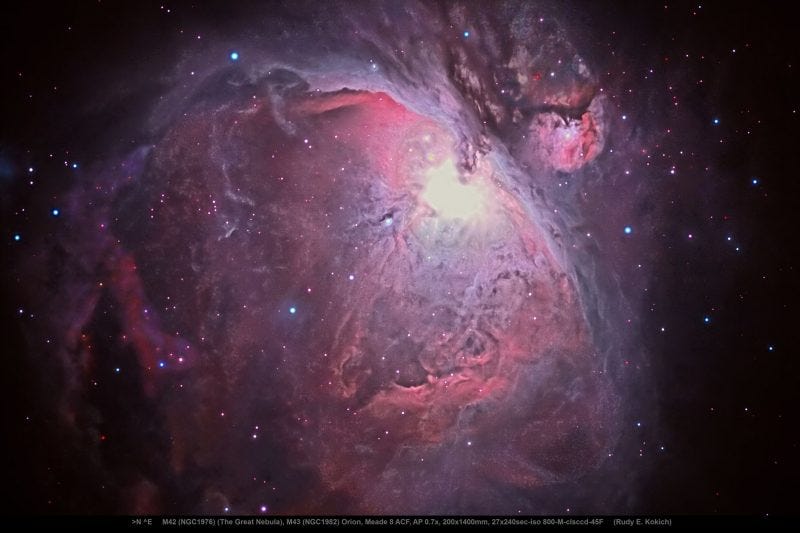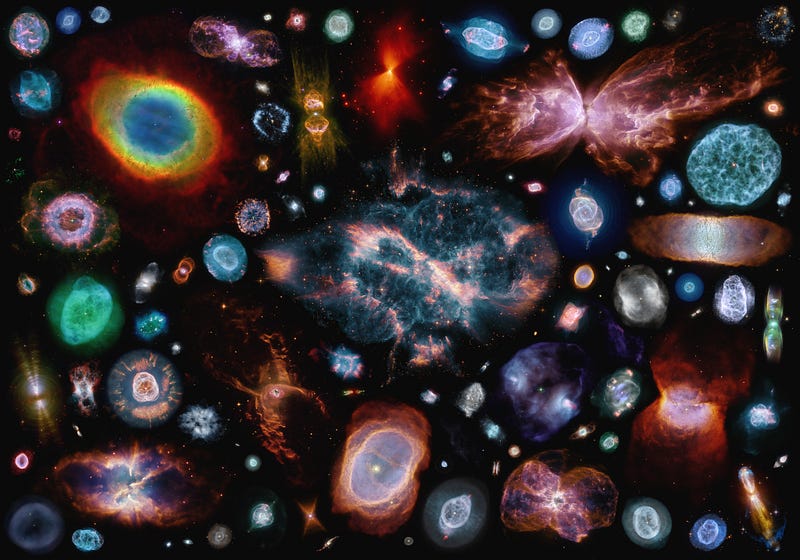# The Mystique of Nebulae: Why Are They So Distant?
Written on
The Enigma of Nebulae Proximity
Have you ever pondered why these stunning nebulae seem so far from us?

Take the Tarantula Nebula, for instance. It spans approximately 550 light years in size, yet it is located about 160,000 light years away in the Large Magellanic Cloud, a satellite galaxy of the Milky Way. This nebula is essentially the remnants of supernovae.
Our nearest nebula, the Helix Nebula, is still a considerable distance from us at 700 light years. This so-called 'planetary' nebula measures around 3 light years across. In contrast, many other nebulae are significantly larger, often measuring hundreds of light years in diameter. One of the closer examples is the Orion Nebula.
In total, our galaxy is home to approximately 20,000 nebulae. Given that these cosmic structures aren't particularly hazardous, why aren't we closer to at least one of them?
The Calculation Behind Nebula Proximity
The answer, surprisingly, is no. We are at a reasonable distance from nebulae, assuming we are situated in a semi-random position within the galaxy. Since around 85% of nebulae are not the smaller planetary types like the Helix Nebula, we can assume that the majority are larger, approximately 100 light years in diameter.
To break down the numbers:
- Milky Way radius: 50,000 light years
- Milky Way disk height: 2,000 light years
- Average nebula radius: 50 light years
- Estimated nebula count: 17,000
Using these values, we can calculate the volumes of the galaxy and the nebulae (with ^ denoting exponentiation):
volume_galaxy = Milky_Way_disk_height x π x Milky_Way_radius ^ 2
volume_nebula = 4/3 x π x nebula_radius ^ 3
When we calculate the proportion of the galaxy occupied by nebulae with a diameter of 100 light years, we find:
Nebula_count x Volume_nebula / Volume_galaxy = 0.0006 = 0.06%
This fraction is comparable to the alcohol concentration that can lead to trouble while driving—an intriguing analogy! While it may not be an entirely negligible figure, it indicates that nebulae occupy just a tiny segment of our galaxy.
The average volume available for each of the 17,000 large diffuse nebulae can be calculated as:
volume_available = volume_galaxy / 17,000
radius_available = (3/4π volume_available)^(1/3) = 665 light years
This suggests that the average distance between us and the nearest diffuse nebula is roughly 665 light years. One of the nearest large diffuse nebulae is the Orion Nebula, located about 1,300 light years away, which aligns with our calculations. Thus, while we might expect to be closer, the average distance seems reasonable given our assumptions.

Despite the presence of approximately 20,000 nebulae, each one is surrounded by an average of 700 light years of space devoid of other significant structures. This observation emphasizes the vastness of our galaxy. In essence, we find ourselves in a relatively sizable void, absent of nebulae.
What Are Nebulae?

Nebulae are massive clouds of interstellar dust and gas scattered throughout the cosmos. They consist of a mix of elements, including hydrogen, helium, and heavier substances. Their breathtaking beauty offers some of the most awe-inspiring sights in the night sky.
There are several types of nebulae, the most prevalent being:
- Emission Nebulae: Composed of ionized gas that emits light.
- Reflection Nebulae: Illuminated by nearby stars, consisting of dust that reflects light.
- Dark Nebulae: Regions of gas and dust that obstruct light from passing through.
All three types are found within our Milky Way and are thought to have formed from the explosive demise of stars.
Additionally, there are two subcategories:
- Diffuse Nebulae: Large clouds, spanning 10 to 1,000 light years, containing dust and gas spread across expansive regions. These can be either emission or reflection nebulae and are often remnants of supernovae.
- Planetary Nebulae: Typically measuring between 1 to 10 light years, these are remnants of stars that have shed their outer layers during stellar evolution. Often illuminated by the central star, they can take on various shapes, from round to elliptical.
Despite their name, planetary nebulae have no relation to planets; they were misnamed because of their planet-like appearance through telescopes.
I enjoy performing simple calculations to verify figures commonly cited, especially when it comes to understanding the immense volume of the Milky Way galaxy.
The first video, The Calculation, offers insights into the mathematical concepts discussed.
The second video, Regina Spektor - The Calculation, provides a creative take on the subject matter, enhancing our understanding through artistic expression.